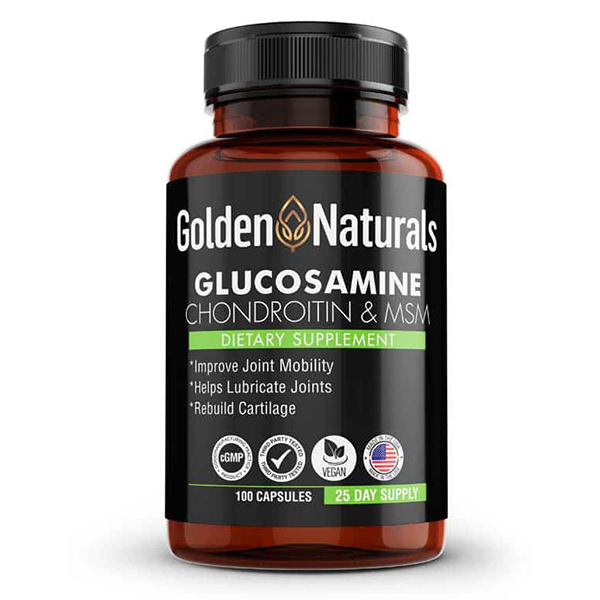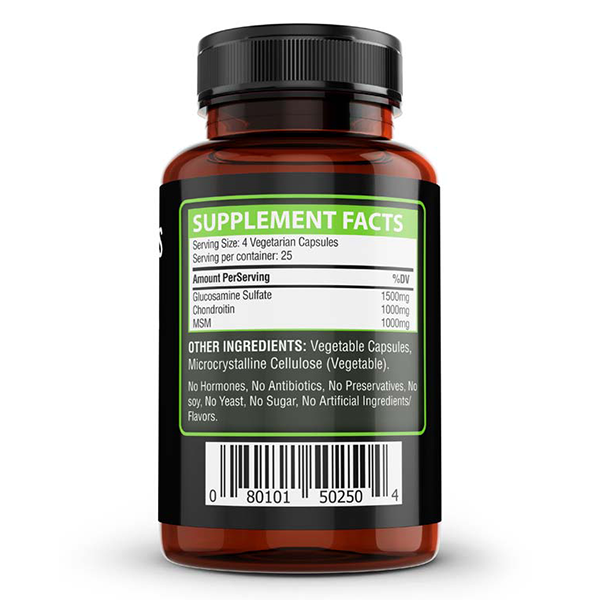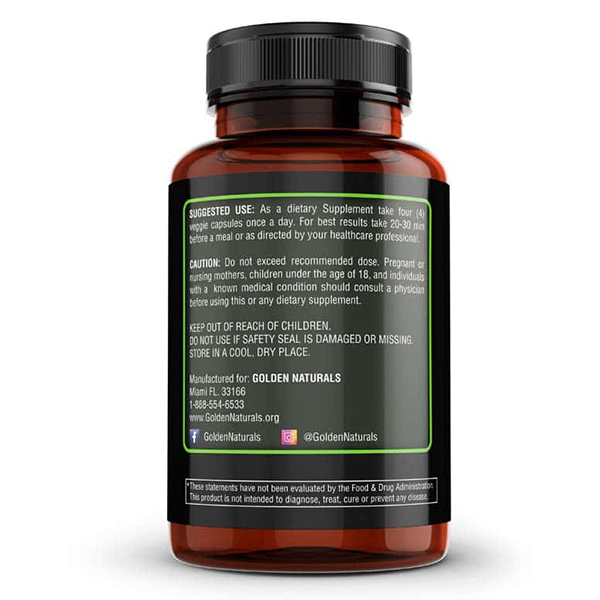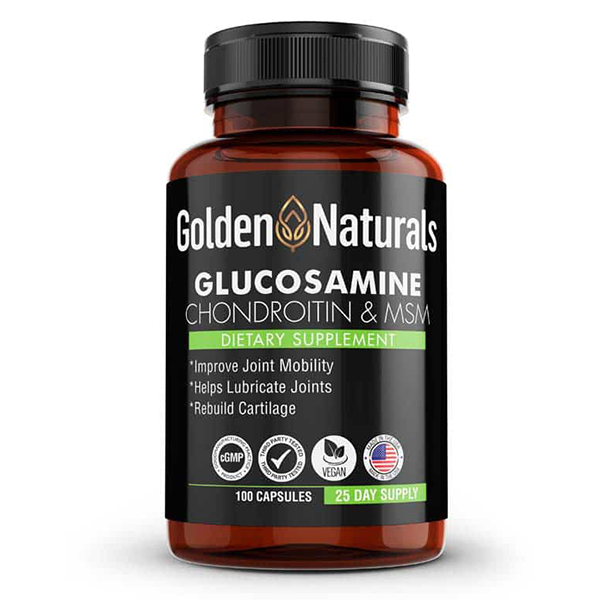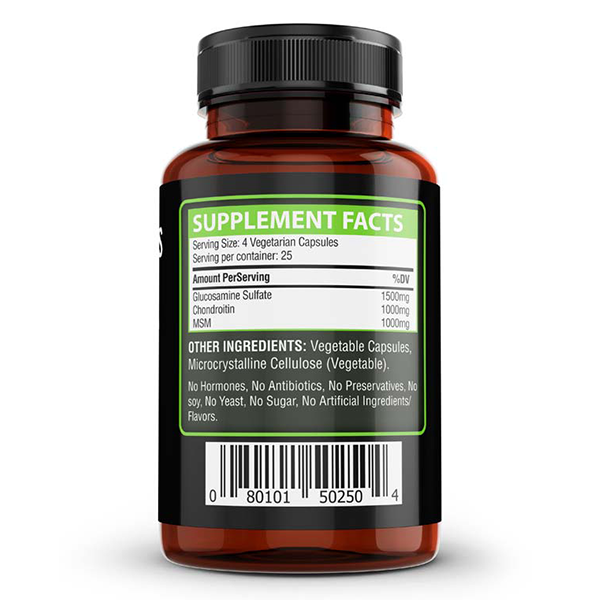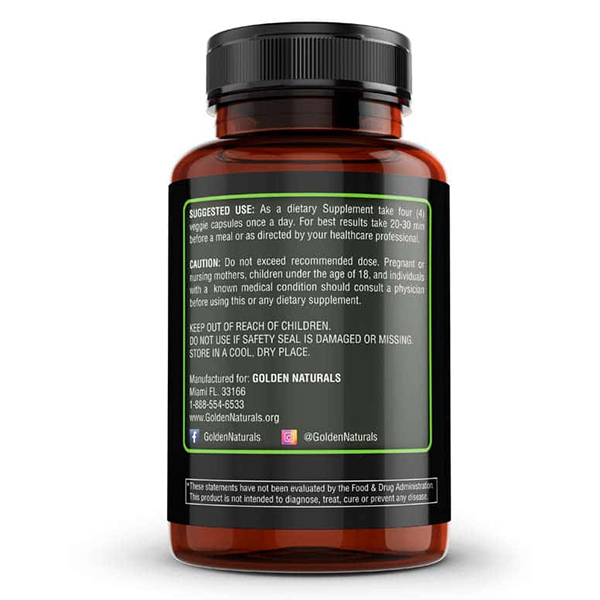Golden Natural
Glucosamine Chondroitin 1500 Mg, 100 Veggie Capsules
Couldn't load pickup availability
Glucosamine is an amino sugar that is produced naturally in humans. It is also found in seashells, or it can be made in the laboratory. Glucosamine hydrochloride is one of several forms of glucosamine.
It is important to read the labels of glucosamine products carefully since several different forms of glucosamine are sold as supplements. These products may contain glucosamine sulfate, glucosamine hydrochloride, or N-acetyl glucosamine. These different chemicals have some similarities. But they may not have the same effects when taken as a dietary supplement. Most of the scientific research on glucosamine has been done using glucosamine sulfate. See the separate listing for glucosamine sulfate. The information on this page is about glucosamine hydrochloride.
Dietary supplements that contain glucosamine often contain additional ingredients. These additional ingredients are frequently chondroitin sulfate, MSM, or shark cartilage. Some people think these combinations work better than taking just glucosamine alone. So far, researchers have found no proof that combining the additional ingredients with glucosamine adds any benefit.
Products that contain glucosamine and glucosamine plus chondroitin vary a great deal. Some do not contain what the label claims. The difference can range from 25% to 115%. Some products in the US that are labeled glucosamine sulfate are actually glucosamine hydrochloride with added sulfate. This product will likely have different effects than one containing glucosamine sulfate.
Glucosamine hydrochloride is used for osteoarthritis, rheumatoid arthritis, glaucoma, a jaw disorder called temporomandibular disorder (TMD), joint pain, and many other conditions, but there is no good scientific evidence to support these uses.
How does it work?
Glucosamine in the body is used to make a “cushion” that surrounds the joints. In osteoarthritis, this cushion becomes thinner and stiff. Taking glucosamine hydrochloride as a supplement might help to supply the materials needed to rebuild the cushion.
Some researchers believe that glucosamine hydrochloride might not work as well as glucosamine sulfate. They think the “sulfate” part of glucosamine sulfate is the important factor because sulfate is needed by the body to produce cartilage.
 
Uses & Effectiveness
- Heart disease. People who take glucosamine might have a lower risk of developing heart disease. But it’s unclear what dose or form of glucosamine might work best. Other forms of glucosamine include glucosamine sulfate and N-acetyl glucosamine. It’s also unclear if this lower risk is from glucosamine or from following healthier lifestyle habits.
- High levels of cholesterol or other fats (lipids) in the blood (hyperlipidemia).Early research suggests that glucosamine hydrochloride does not affect cholesterol or triglyceride levels in people with high cholesterol.
- A disorder that affects the bones and joints, usually in people with selenium deficiency (Kashin-Beck disease). Early evidence shows that taking glucosamine hydrochloride along with chondroitin sulfate reduces pain and improves physical function in adults with a bone and joint disorder called Kashin-Beck disease. The effects of glucosamine sulfate on symptoms of Kashin-Beck disease are mixed when the supplement is taken as a single agent.
- Knee pain. There is some early evidence that glucosamine hydrochloride might relieve pain for some people with frequent knee pain. But other research shows that taking glucosamine hydrochloride along with other ingredients does not relieve pain or improve walking ability in people with knee pain.
- Osteoarthritis. There is conflicting evidence about the effectiveness of glucosamine hydrochloride for osteoarthritis. This product contains a combination of glucosamine hydrochloride, chondroitin sulfate, and manganese ascorbate. Some evidence suggests that this combination can improve pain in people with knee osteoarthritis. This combination might work better in people with mild-to-moderate osteoarthritis than in people with severe osteoarthritis.  The effects of taking glucosamine hydrochloride along with only chondroitin sulfate are mixed. Some evidence shows that taking a specific product containing glucosamine hydrochloride and chondroitin sulfate reduces pain in adults with knee osteoarthritis. Most research suggests that taking glucosamine hydrochloride alone does not reduce pain in people with osteoarthritis of the knee. More research has been done on glucosamine sulfate than on glucosamine hydrochloride. There is some thought that glucosamine sulfate may be more effective than glucosamine hydrochloride for osteoarthritis. Most research comparing the two forms of glucosamine showed no difference. However, some researchers have criticized the quality of some of these studies.
- Rheumatoid arthritis (RA). Early research shows that taking a specific glucosamine hydrochloride product  in combination with prescription medical treatments reduces pain compared to a sugar pill. However, this product does not seem to decrease inflammation or reduce the number of painful or swollen joints.
- Stroke. People who take glucosamine might have a slightly lower risk of having a stroke. But it’s unclear what dose or form of glucosamine might work best. Other forms of glucosamine include glucosamine sulfate and N-acetyl glucosamine. It’s also unclear if this lower risk is from glucosamine or from following healthier lifestyle habits.
- A group of painful conditions that affect the jaw joint and muscle (temporomandibular disorders or TMD). Early research shows that taking a combination of glucosamine hydrochloride, chondroitin sulfate, and calcium ascorbate twice daily reduces joint swelling and pain, as well as noise made at the jaw joint, in people with temporomandibular disorder.
- A group of eye disorders that can lead to vision loss (glaucoma).
- Back pain.
- Weight loss.
